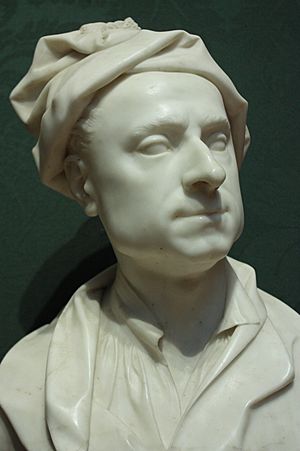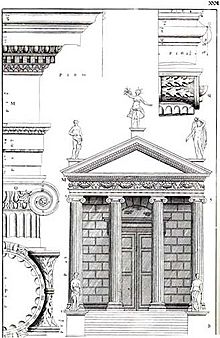Isaac Ware facts for kids

Isaac Ware (born 1704, died 1766) was a famous English architect. He also translated important books by an Italian architect named Andrea Palladio.
Contents
A Difficult Start: Isaac Ware's Early Life
Isaac Ware had a very tough start in life. He was born poor and worked as a chimney sweep and a street urchin (a homeless child). When he was about eight years old (around 1712), something amazing happened. A rich nobleman, Richard Boyle, 3rd Earl of Burlington, adopted him.
Lord Burlington reportedly saw young Isaac drawing on the pavement in Whitehall, London. He was so impressed by Isaac's talent and intelligence that he took him into his own home. Isaac then received an excellent education, just like a young nobleman. This included a "Grand Tour" of Europe, which was a long trip to study art and architecture. Even when he was older, people said you could still see the soot from his chimney-sweeping days!
Isaac Ware's Architectural Career
Isaac Ware became an apprentice to another architect, Thomas Ripley, in 1721. He later followed Ripley into jobs at the Office of Works, which was a government department for building projects. However, his main teacher for design was his adoptive father, Lord Burlington.
Ware was also part of the St. Martin's Lane Academy. This was a group that brought together many important artists and designers of the English Rococo movement. One of these artists was Louis François Roubiliac, who created a sculpture of Ware around 1741.
Notable Buildings by Isaac Ware
Isaac Ware held several important jobs with the Office of Works from 1728 until he died. He even became Secretary, a position once held by the famous architect Nicholas Hawksmoor. But most of his major building projects were for private clients.
He designed Chesterfield House, Westminster, built between 1747 and 1752. This house had a classic Palladian style on the outside and fancy Rococo details inside. Sadly, it was torn down in 1937.
Ware also built a few country houses. Most of these have been changed or demolished over time. Two houses that still exist are Clifton Hill House in Bristol and Wrotham Park, Hertfordshire. Clifton Hill House, built from 1746 to 1750, is a Palladian villa. This type of house was a style Ware also used for two homes in Scotland. At Wrotham Park (built 1756), the main part of the house had wings on each side that ended in eight-sided buildings. Ware also built many homes for sale in the West End of London.
He helped finish parts of Leinster House after the architect Richard Cassels died in 1751. In the late 1750s, Ware also worked on changes to the inside of Leinster House for James FitzGerald, 1st Duke of Leinster.
Ware's Important Books
Isaac Ware was not happy with the first English translation of Andrea Palladio's famous book, I Quattro Libri dell'Architettura (The Four Books of Architecture). He especially disliked the drawings in that version. So, in 1738, Ware published his own translation. He included his own very careful and detailed drawings. Many experts, like Howard Colvin, believed Ware's version of The Four Books of Architecture was the best English translation for a very long time.

An expert named Colvin said that Ware truly understood Palladio's ideas. He also noted that Ware helped to change the strict rules of taste that Lord Burlington had set in the 1720s. In 1756, Ware published another important book called A Complete Body of Architecture. This book covered many different topics and was meant to be a complete guide to architecture. John Summerson described it as a well-made book that showed how solid and thoughtful Ware's own building work was.


